Top Rankings
Scott County School District ranks among the top 20% of public school district in Kentucky for:
Category
Attribute
Diversity
Most diverse schools (Top 1%)
Community Size
Largest student body (number of students) (Top 1%)
For the 2025 school year, there is 1 public preschool serving 291 students in Scott County School District.
Public Preschools in Scott County School District have a diversity score of 0.56, which is more than the Kentucky public preschool average of 0.41.
Minority enrollment is 36% of the student body (majority Hispanic), which is more than the Kentucky public preschool average of 24% (majority Hispanic and Black).
Overview
This School District
This State (KY)
# Schools
17 Schools
543 Schools
# Students
9,873 Students
227,023 Students
# Teachers
630 Teachers
15,378 Teachers
Student : Teacher Ratio
16:1
16:1
District Rank
Scott County School District, which is ranked within the top 30% of all 171 school districts in Kentucky (based off of combined math and reading proficiency testing data) for the 2021-2022 school year.
The school district's graduation rate of 89% has decreased from 92% over five school years.
Overall District Rank
#44 out of 172 school districts
(Top 30%)
(Top 30%)
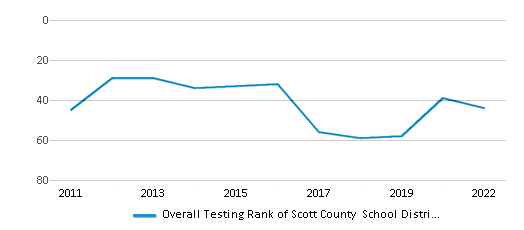
Math Test Scores (% Proficient)
41%
38%
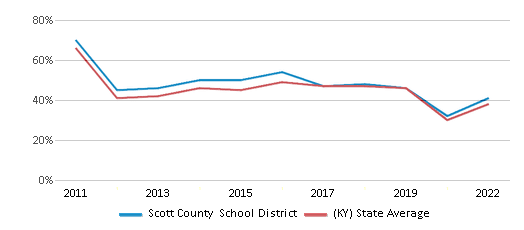
Reading/Language Arts Test Scores (% Proficient)
49%
45%
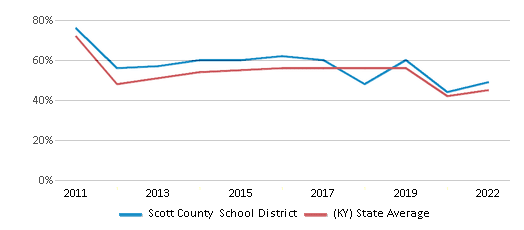
Science Test Scores (% Proficient)
24%
22%
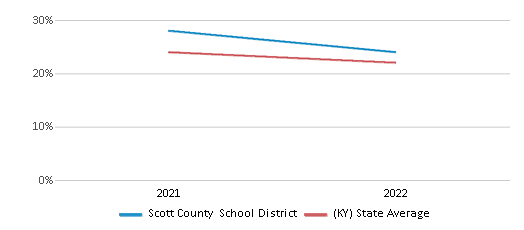
Graduation Rate
89%
90%
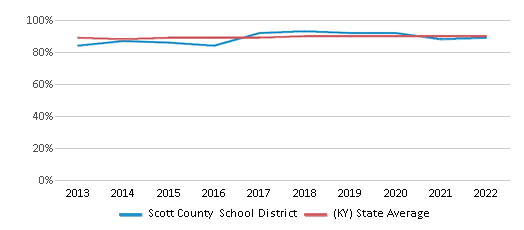
Students by Ethnicity:
Diversity Score
0.43
0.41
# American Indian Students
6 Students
304 Students
% American Indian Students
n/a
n/a
# Asian Students
96 Students
4,469 Students
% Asian Students
1%
2%
# Hispanic Students
1,130 Students
19,502 Students
% Hispanic Students
11%
9%
# Black Students
662 Students
18,667 Students
% Black Students
7%
8%
# White Students
7,360 Students
171,963 Students
% White Students
75%
76%
# Hawaiian Students
12 Students
463 Students
% Hawaiian Students
n/a
n/a
# Two or more races Students
607 Students
11,655 Students
% of Two or more races Students
6%
5%
Students by Grade:
# Students in PK Grade:
291
25,491
# Students in K Grade:
677
34,372
# Students in 1st Grade:
702
32,950
# Students in 2nd Grade:
803
33,468
# Students in 3rd Grade:
699
28,975
# Students in 4th Grade:
695
28,582
# Students in 5th Grade:
753
28,113
# Students in 6th Grade:
669
7,193
# Students in 7th Grade:
710
2,891
# Students in 8th Grade:
742
3,034
# Students in 9th Grade:
854
511
# Students in 10th Grade:
824
497
# Students in 11th Grade:
783
478
# Students in 12th Grade:
666
446
# Ungraded Students:
5
22
District Revenue and Spending
The revenue/student of $12,228 in this school district is less than the state median of $14,242. The school district revenue/student has stayed relatively flat over four school years.
The school district's spending/student of $11,334 is less than the state median of $13,981. The school district spending/student has stayed relatively flat over four school years.
Total Revenue
$121 MM
$9,360 MM
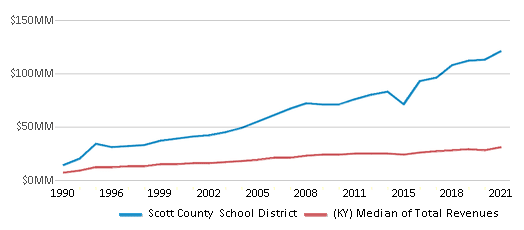
Spending
$112 MM
$9,189 MM
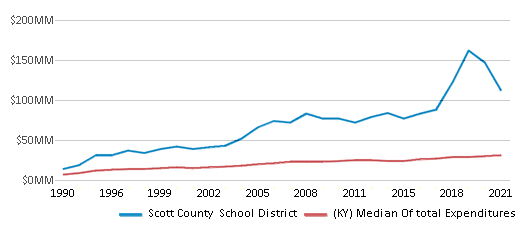
Revenue / Student
$12,228
$14,242
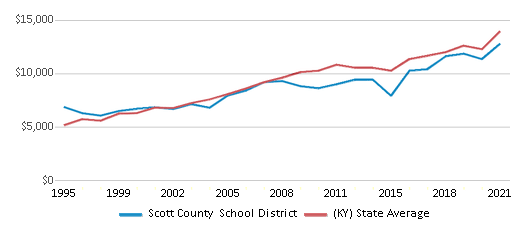
Spending / Student
$11,334
$13,981
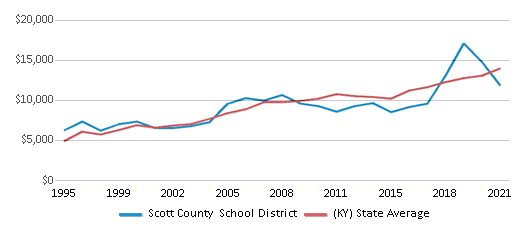
Best Scott County School District Public Preschools (2025)
School
(Math and Reading Proficiency)
(Math and Reading Proficiency)
Location
Grades
Students
Rank: n/an/a
1306 Long Lick Rd
Georgetown, KY 40324
(502) 868-0411
Georgetown, KY 40324
(502) 868-0411
Grades: PK
| 291 students
Recent Articles

What Is A Charter School?
Explore the world of charter schools in this comprehensive guide. Learn about their history, how they operate, and the pros and cons of this educational innovation. Discover key facts about charter schools, including admission policies, demographics, and funding, as well as what to look for when considering a charter school for your child.

10 Reasons Why High School Sports Benefit Students
Discover the 10 compelling reasons why high school sports are beneficial for students. This comprehensive article explores how athletics enhance academic performance, foster personal growth, and develop crucial life skills. From improved fitness and time management to leadership development and community representation, learn why participating in high school sports can be a game-changer for students' overall success and well-being.

February 05, 2025
Understanding the U.S. Department of Education: Structure, Impact, and EvolutionWe explore how the Department of Education shapes American education, from its cabinet-level leadership to its impact on millions of students, written for general audiences seeking clarity on this vital institution.





